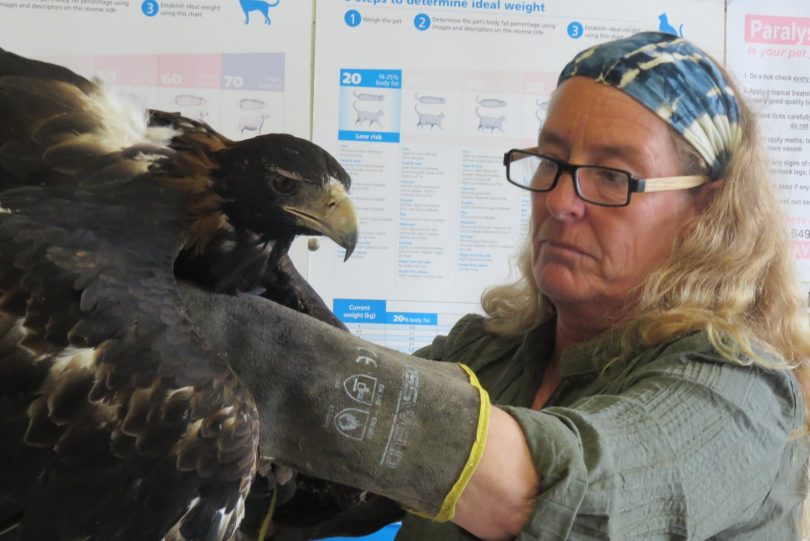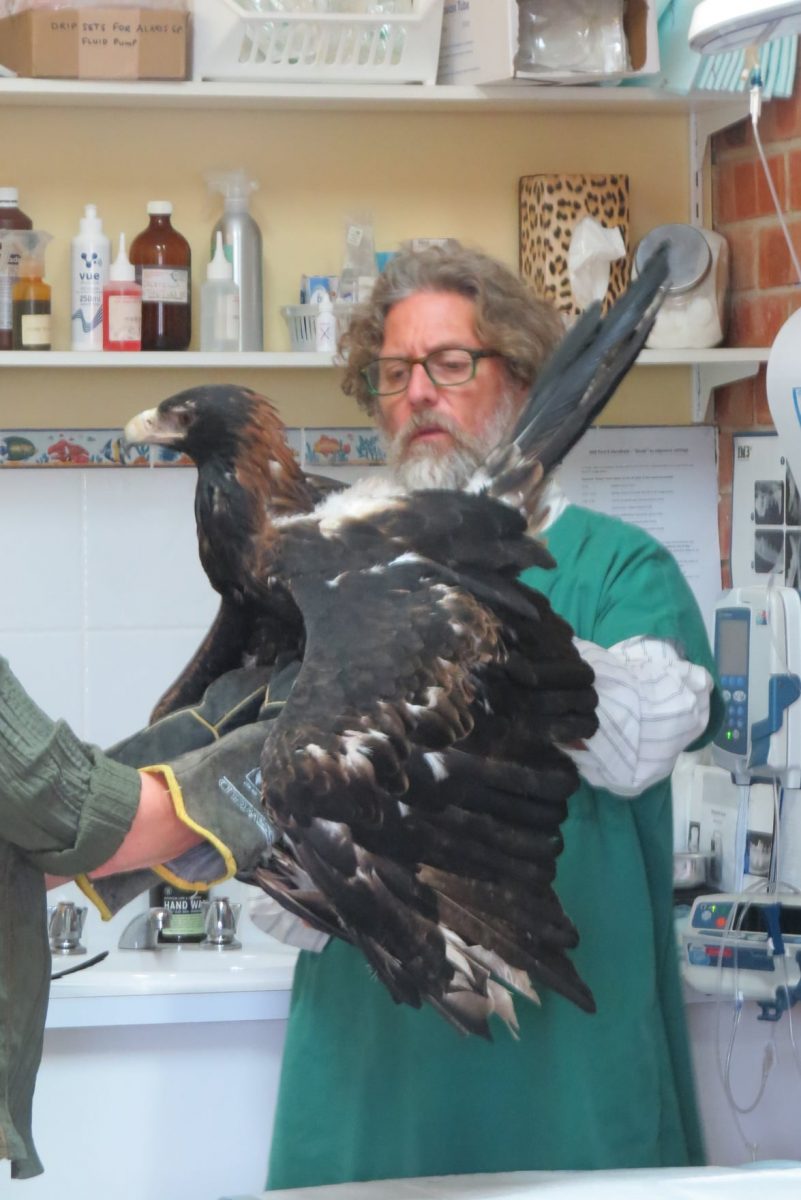
Goldie Fulton holds the wedge-tailed eagle that was rescued from a road near Bega and taken to Bermagui Veterinary Clinic. Photo: Motria von Schreiber.
A wedge-tailed eagle had a lucky escape after it was possibly shot in its wing and survived for at least several days on the ground before it was rescued.
The bird coordinator for Wildlife Rescue Far South Coast, Goldie Fulton, said a carer found the eagle on the side of the road near Bega and brought it to her on Monday, 15 March.
“At first we thought it was possibly hit by a car, but something just didn’t quite add up because he didn’t seem to have any head injuries and was clear in his eyes,” she said.
The eagle was taken to Bermagui Veterinary Clinic where Dr Carl von Schreiber took X-rays that showed the bird had one piece of lead shot – a pellet used in shotguns – embedded in a wing, and most of the bird’s flight feathers had been damaged.
“It’s going to take a long time for it to recover because until it gets flight feathers, it won’t be able to fly,” he said.
“It’s a lucky bird. It probably didn’t get the full blast otherwise we wouldn’t be seeing him.”

Dr Carl von Schreiber holds the injured wedge-tailed eagle. Photo: Motria von Schreiber.
Dr von Schreiber said when the eagle arrived it was half the weight it should have been, and Ms Fulton said the bird would have struggled to eat after it was unable to fly.
Wedge-tailed eagles are a protected species, with the Australian Museum stating they are the country’s largest living bird of prey, as well as one of the largest eagles in the world, with a wingspan of 2.3 metres.
Ms Fulton said it is not very often eagles are shot, but it does occasionally happen.
She said during the past nine years, this is only the second eagle that she knows of that has been hit with a bullet.
“They are big enough to take sheep or little lambs so that could possibly be what happened [shot by a farmer],” said Ms Fulton. “But it’s so hard to say.”
The Australian Museum says wedge-tailed eagles will kill lambs, but this comprises only a small percentage of their total prey.
“Many of the reports of predation on lambs result from birds scavenging already dead animals,” says the museum.
In September 2018, ABC News reported a man had been charged with using poisoned baits to kill 136 wedge-tailed eagles in Far East Gippsland, near the NSW border.

The rescued wedge-tailed eagle is expected to fly again. Photo: Motria von Schreiber.
After a few days of Ms Fulton’s care, the eagle will be taken to Higher Ground Raptor Centre, a bird of prey rehabilitation, release and education facility managed by licensed carer Peggy McDonald.
Ms Fulton said the bird will need to remain in care for six to nine months while he regrows his flight feathers.
“He’s not out of the woods yet, but he’s doing well,” she said.
Perhaps surprisingly, Ms Fulton said wedge-tailed eagles are actually very gentle when they come into care.
“When they first come in they are a bit cranky because they are frightened and stressed,” she said.
“But they settle down when they realise you are looking after them. The big ones seem to be calmer than the smaller raptors, which seem to be more fierce and quicker.
“It’s an absolute pleasure looking after them. I learn so much with every single bird.”
According to the Biodiversity Conservation Act 2016, someone who harms a protected animal faces fines as well as two years’ jail.








